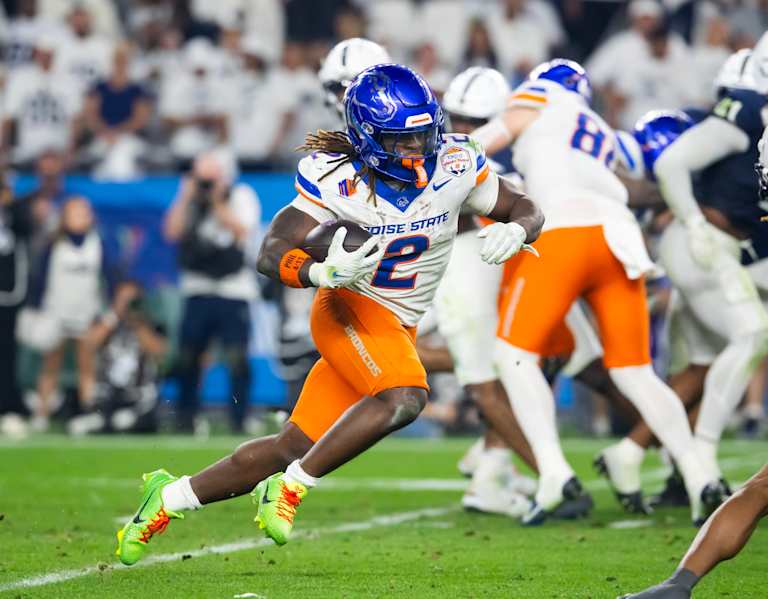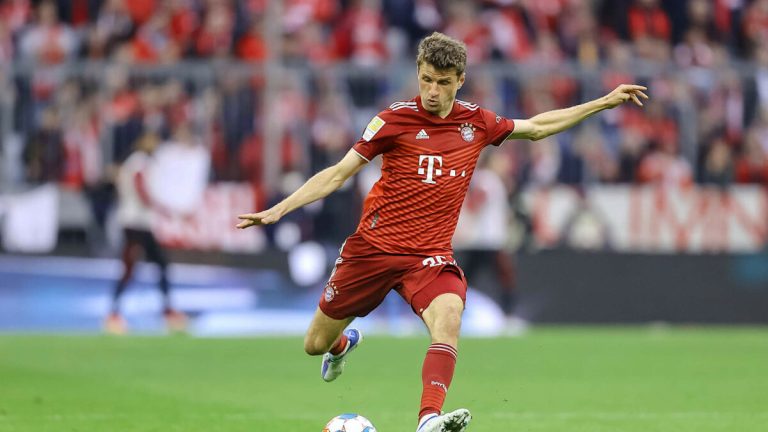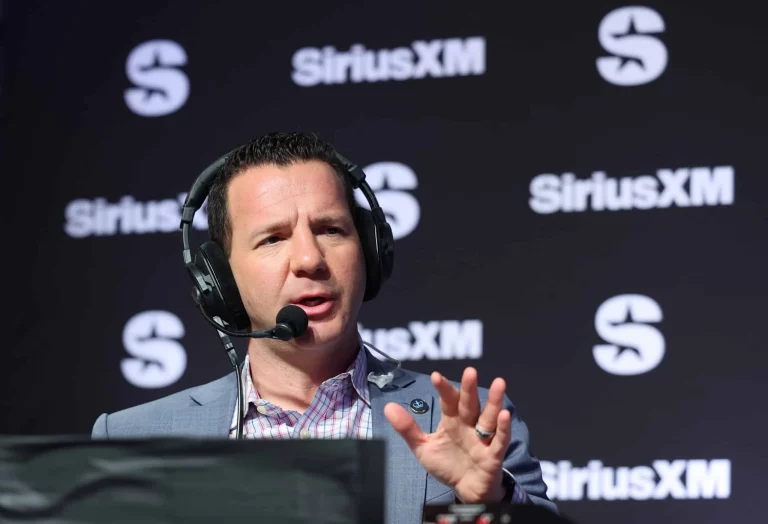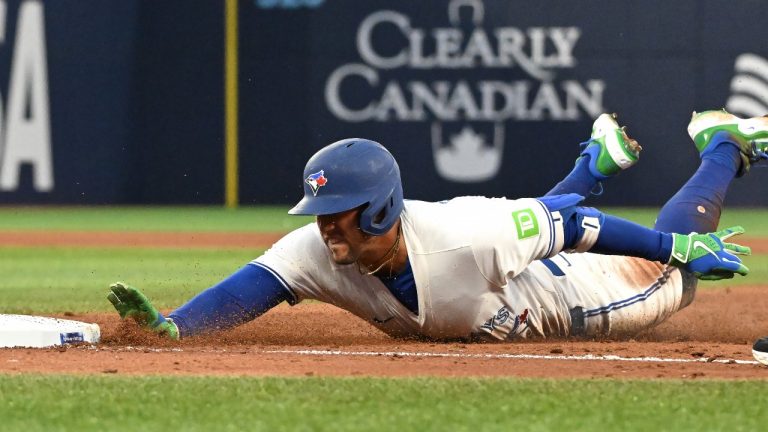What this year’s NFL Draft trends will tell us about the 2026 rankings
NFL Draft trends are used in our rankings to help shape our decisions. Here is a position-by-position breakdown of thoughts and how trends in this draft, based on recent research by NFL Draft guide The Beast, could impact the 2026 class and beyond.
QUARTERBACKS
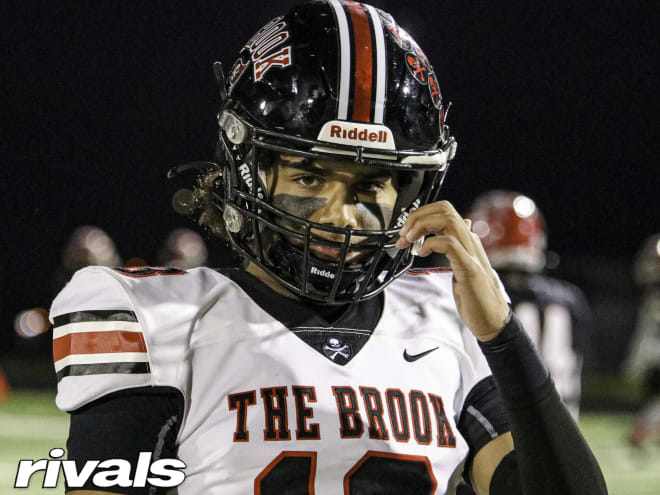
Key points: None of the top-20 quarterbacks have a hand smaller than nine inches. Only one (Dillon Gabriel) is under 6-foot tall.
Hand size is super important with quarterbacks and nine inches is the going rate right now. It’s actually Miami’s Cam Ward – the expected No. 1 pick – who has the smallest hands among the top QBs in this draft.
Of the top quarterbacks in the 2026 class, all of them have equal or bigger hands than nine inches except for USC commit Jonas Williams. That’s a little surprising since he’s 6-foot-3 so we wonder if that’s a mismeasurement that we will have to review at the Rivals Five-Star this summer.
Over the years, height has become less important and mobility has become more crucial in our rankings. But not everybody is Bryce Young, either, and so while a QB can be under 6-foot and still thrive, this draft is proving it’s more difficult.
RUNNING BACKS
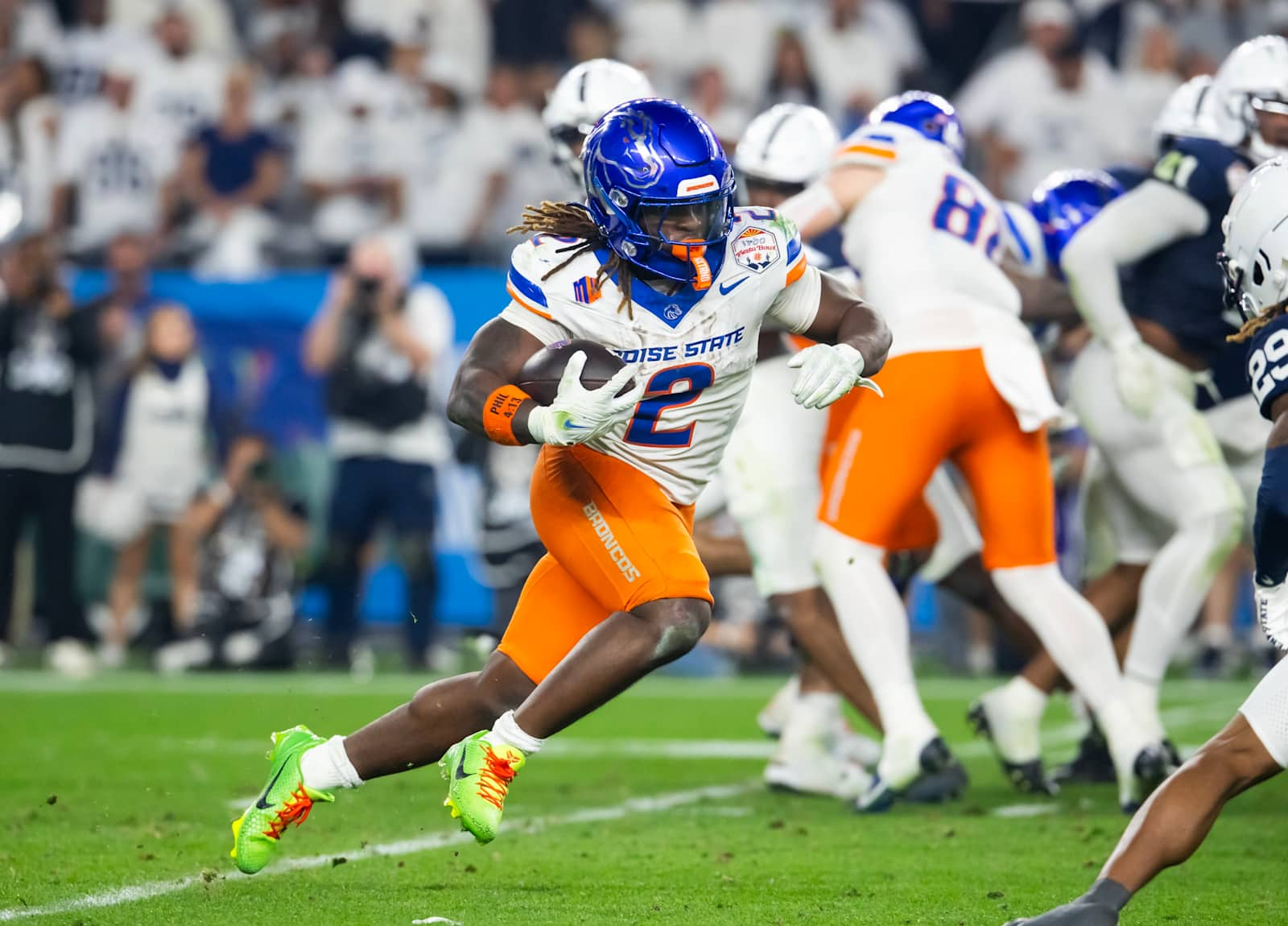
Among the top-10 running backs in this year’s draft, the average size is right around 5-foot-10 and 210 pounds. Eleven of the top 12 running backs are under 6-foot. Derrick Henry is a unicorn and a total exception to this rule as is Braelon Allen at 6-foot-2 and 245 pounds. Odds are if a running back is anywhere near that big, he’s going to be too slow for the NFL.
And that brings us to 40-yard dash times among running backs. Seven of the top 10 (Boise State’s Ashton Jeanty doesn’t have a verified time from the combine or his pro day) ran in the 4.4s or better. The slowest in the top 10 was Iowa’s Kaleb Johnson at 4.57.
There are some taller running backs high on our rankings list but No. 1 Ezavier Crowell at 5-foot-11 and 215 pounds is right in the sweet spot. Jonaz Walton and USC commit Deshonne Redeaux might be undervalued.
WIDE RECEIVERS

There does not seem to be a lot of rhyme or reason among this group that will drastically influence our rankings.
Arizona’s Tetairoa McMillan is the top receiver at 6-foot-4 and 213 pounds but he has a slower 40-time at 4.53 seconds. The next four receivers on the list are no taller than 6-foot in Texas’ Matthew Golden, Missouri’s Luther Burden. Ohio State’s Emeka Egbuka and Iowa State’s Jaylin Noel. All the top receivers have a wingspan of 76.5 inches or higher with McMillan leading the way at just over 78.
Does that tell us shifty slot receivers should be more valued than taller, prettier receivers like Cederian Morgan and Chris Henry, Jr.? That’s a really tough call because of their playmaking ability, catch radius and mismatch problems but maybe just falling in love with that length is a miscalculation on our part.
TIGHT ENDS

Tight end is going to be a major challenge for us because none of the top-26 tight ends in the draft class reach 6-foot-6. Yet, five of our top six and seven of our top nine tight ends are 6-foot-6.
This is a phenomenal tight end class at the high school level so maybe they will buck the trend but this only reinforces the belief that maybe Santa Ana (Calif.) Mater Dei standout Mark Bowman has an argument for No. 1 at the position. At 6-foot-5 and 225 pounds, Bowman is only an inch taller and five pounds lighter than Brock Bowers.
OFFENSIVE TACKLES
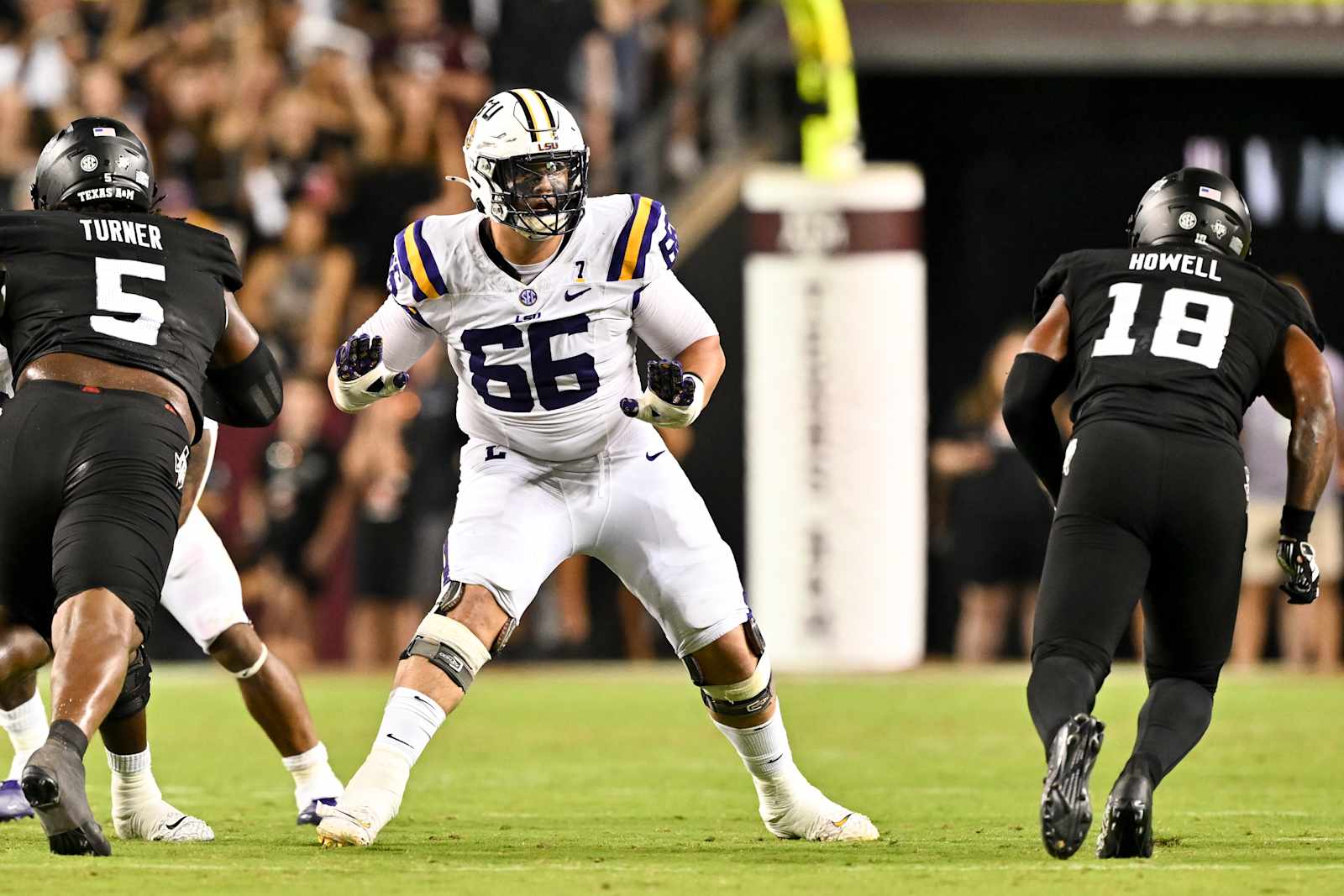
There are certain trends that aren’t necessarily favorable for five-stars Jackson Cantwell, Immanuel Iheanacho and Felix Ojo but all three are so talented and so dominant and project so high that maybe they can actually buck these draft numbers.
LSU’s Will Campbell is just under 6-foot-6. Purdue’s Armand Membou is just over 6-foot-4. Ohio State’s Josh Simmons and Oregon’s Josh Conerly are under 6-foot-5 and Ohio State’s Donovan Jackson is under 6-foot-4 and still listed at tackle.
Among the top 10, only three weigh in the 330s and all the others are 319 or less. Wingspan – more than height – seems the most crucial among offensive tackles.
Surprisingly, Campbell has the shortest arms among the top-40 offensive tackles but is such a technician he could still be No. 1 off the board but nearly everyone else is well into the 80-plus range.
INTERIOR OFFENSIVE LINEMEN

There has always been this perception that offensive tackles were taller and longer and interior offensive linemen were shorter, heavier and had shorter arms. But this year at least, that could nor be further from the truth.
To be a projected high NFL Draft pick on the offensive line, the ideal height and weight is 6-foot-5 and 319 pounds for an offensive tackle and 6-foot-5 and 316 pounds for an interior player. Yes, an inside guy on average weighs less than an offensive tackle at the same height.
That is extraordinary and also telling when we look at our offensive line rankings. Only two offensive tackles among the top 10 have wingspans longer than 83 inches. Among interior players, three are at 84 inches or bigger including the top two in Alabama’s Tyler Booker and Texas’ Kevin Banks.
This is some high-level nerding out on offensive line measurements but also incredibly telling when it comes to height, weight and wingspan especially.
EDGE RUSHERS

We have used the edge rusher position for longer, lighter defensive ends who could also drop back and play in space essentially as a big linebacker but that’s not necessarily how this draft class is seen at the position.
The average weight of the top-10 edge rushers in this draft class is nearly 258 pounds. So weight shouldn’t necessarily be a factor in our edge rushing rankings as much as length. Six-foot-three or taller is crucial here as Georgia’s Jalon Walker is the only exception at the highest end and length is most important as nine out of the top 10 edge rushers have 79-inch or better wingspans with the majority of them in the 80s.
What doesn’t seem so important? Running the 40-yard dash. Five of the top 10 including the top two in Walker and Penn State’s Abdul Carter skipped it.
DEFENSIVE TACKLES
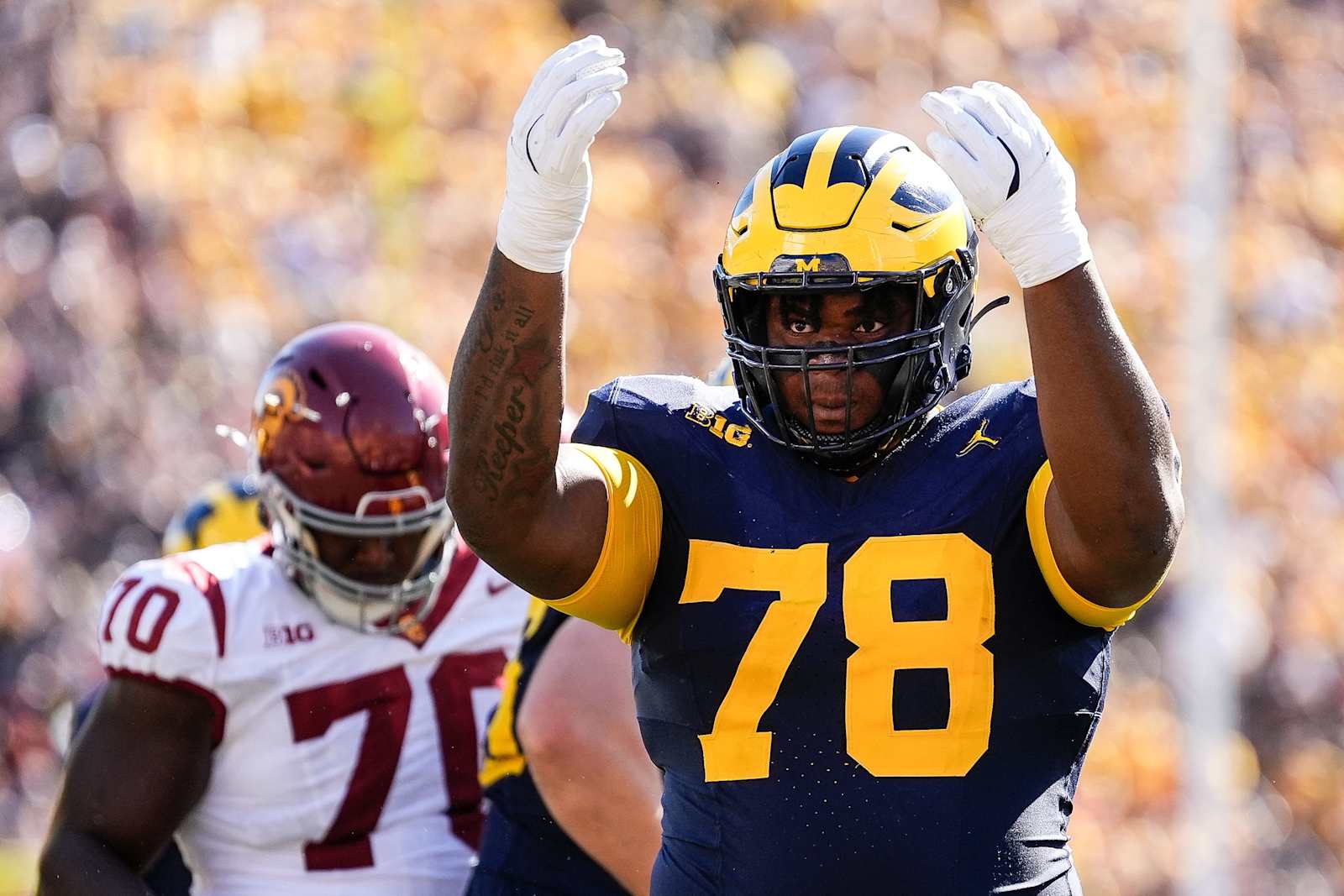
If the NFL Draft trends for defensive tackles hold up, I like where we stand with our defensive tackle rankings as space eaters are out and taller gap shooters are in.
Of the top 10, all but one are at least 6-foot-3 and they’re right around 300 pounds as only three – Michigan’s Kenneth Grant, Texas’ Alfred Collins and Ohio State’s Tyleik Williams – hover at 330.
From a recruiting perspective, Michigan could be dramatically helped by this draft with future defensive tackles as Mason Graham is expected to be the first DT taken but Grant shouldn’t be too far behind. And don’t worry about the 40 – five of them, including Graham – don’t have a verified time.
Our top defensive tackle and only five-star at the position – Richard Anderson – is heavier but he carries it well and moves phenomenally well for his size.
LINEBACKERS

Just like at edge rusher, throw out height at linebacker and worry more about wingspan. Of the top-10 linebackers in the draft, only one is taller than 6-foot-3. Wingspan of 77.5 inches is the ideal size with Alabama’s Jihaad Campbell right at 80.
This brings us to a really important consideration moving forward at a position that has lost some of its luster in the draft. USC commit Xavier Griffin and four-star Talanoa Ili are 6-foot-4 right now. There are plenty of others pushing 6-foot-3. Are these edge rushers in the future and are we just falling in love with looks over what the NFL seems to want at the LB position?
CORNERBACKS

For the second-straight year, there are no 6-foot-3, 6-foot-4 cornerbacks among the top of the group. What keeps me up at night is how do we turn down elite players such as Ohio State’s Devin Sanchez, who measured 6-foot-2 there, or 6-foot-4 Dijon Lee Jr. even if the overwhelming trend is toward shorter cornerbacks who hover right around 200 pounds?
Sanchez and Lee were the top two corners in the 2025 Rivals250. In 2026, 6-foot-3 Havon Finney Jr., is a five-star and 6-foot-2 Brandon Lockhart and 6-foot-3 Jorden Edmonds are definitely under consideration.
It’s a really tough but important call to make during future rankings cycles. Also crucial is to run in the 4.4 range or lower. Colorado’s Travis Hunter and Michigan’s Will Johnson didn’t test in that event but Texas’ Jahdae Barron, Kentucky’s Maxwell Hairston and Kansas State’s Jacob Parrish all went sub-4.4.
SAFETIES

There seems to be a massive misconception between height and length at safety – and what the NFL really wants. Because among the top-10 safeties, only South Carolina’s Nick Emmanwori at 6-foot-3 is taller than 6-foot-1.5. In fact, seven of the top-10 safeties are 6-foot or shorter. Length is important at the highest end but in the back half of that top 10, it doesn’t seem to really matter.
We have always viewed many of the highest-end safeties as these long, rangy, tall defensive backs who could cover ground. That is still super important but NFL teams seemingly more and more want instincts, bulldogs and guys who can cover ground while also being on the shorter side.
